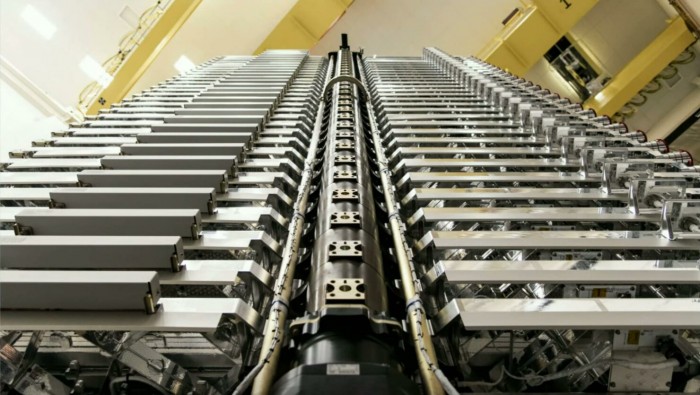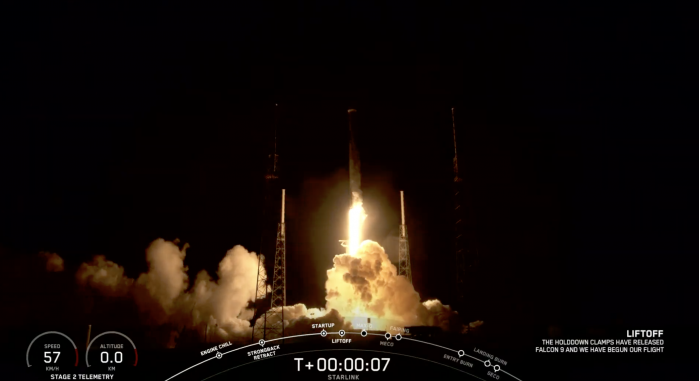SpaceX Wins FCC Approval To Test Starlink Ground Stations In 6 States
2020-07-31 / Number of views:1453

A cluster of 60 SpaceX Starlink satellites before launch on January 29, 2020. The launch, believed to have cost SpaceX $50 million, was the company‘s third launch of an operational batch of Starlink satellites. (Image Credit: SpaceX)
Hawthorne, California-based astronautic launch services provider and equipment manufacturer Space Exploration Technologies Corp. (SpaceX) plans to diversify its operations through launching an internet network consisting of non-geostationary satellites and ground base stations. Dubbed as Starlink, this network eventually intends to function on its own through using lasers for relaying data between the satellites to ensure global coverage.
SpaceX‘s plans for Starlink have however come under the scrutiny of the Federal Communications Commission (FCC), which is yet to decide on whether to maintain the company‘s preferential access to certain frequency bands. Additionally, the Commission is also yet to change its mind about Starlink being ‘experimental‘ in nature; a shift that will qualify the network to receive American government funds for providing internet access to users in rural areas.
To this end, Starlink just scored a big win from the FCC as the regulatory body has granted SpaceX Services Inc. temporary authority to operate Starlink ground stations located in six American states. The approval comes following SpaceX‘s decision to file the Special Temporary Authority (STA) request with the FCC in mid-June.
SpaceX Granted Temporary Authority To Operate Starlink Ground Stations In California, Minnesota, Idaho, Alabama, Georgia and Montana
For the initial stage of Starlink‘s launch, SpaceX will have to use ground-based Earth stations to operate the network and provide users with the ability to connect with internet servers. The company requested the FCC to allow it to temporarily operate six Earth stations in different American states to test these ground stations and the satellites, in an attempt to ensure that the network performs according to expectations once it is launched commercially later this year.
The six ground stations for which SpaceX has received FCC approval are located in Hitterdal, MN; Tionesta, CA; Robertsdale, AL; and Baxley, GA, Butte, MT; and Colburn, ID. For uploading data from the stations to the Starlink satellites, the company intends to use the 28.6-29.1 GHz and 29.5-30.0 GHz spectrums and for downlink, it intends to use the 17.8-18.6 GHz and 18.8-19.3 GHz.

The Falcon 9 Block 5 (Booster B1049.5) with the eighth batch of Starlink satellites lifts off on 4th June 2020 from Cape Canaveral Air Force Station in Florida. (Image: SpaceX livestream)
FCC‘s approval also requires SpaceX to be responsible for any interference that might occur with existing users of the aforementioned spectrum bands. Specifically, they are tilted against SpaceX due to the facts. that while the company is responsible for not willfully causing interference with other, current users of the band and that it is not liable to receive any protection from said interference, should this interference occur then SpaceX is required to stop broadcasting from the ground station that is responsible for the occurrence and proceed to inform the FCC of the event.
Each of SpaceX‘s gateway Earth stations features eight antennas which are manufactured by in-house by SpaceX. The antennas come with minor and major diameters of 1.5 meters each, are located 3.2 meters above ground level, have an input power of 50 Watts and Effective Isotropic Radiated Power (EIRP) of 66.5 decibel-Watt. EIRP is an indicator of the antenna‘s maximum power output in a single direction.
SpaceX‘s STA period commences today and it will last for 60 days before ending in September. In the narrative for the authorization request, the company directly tied the grant to its ability to refine Starlink for creating a network that is capable of serving populations in areas that are typically either deprived of internet connectivity or where users find it difficult to obtain coverage. SpaceX is also required to coordinate with any federal users of the frequency bands in which it has been authorized to operate, and the approval comes as the company prepares to expand the number of Starlink satellites orbiting the Earth by conducting more launches.
- navigation
- Categories
- Contact
Add: 6F,building 5,CEC Park,Caotan 10th road,Xi'an,China
Post Code:710018
Tel: +86-29-88868880 Fax: +86-29-89348169
E-mail:info@satpro.com
Germany
Add: Dorftr. 1i, 16761, Hennigsdorf, Brandenburg, Germany
Tel: +4933022079295
- QR CODE

NEEQ:831244






